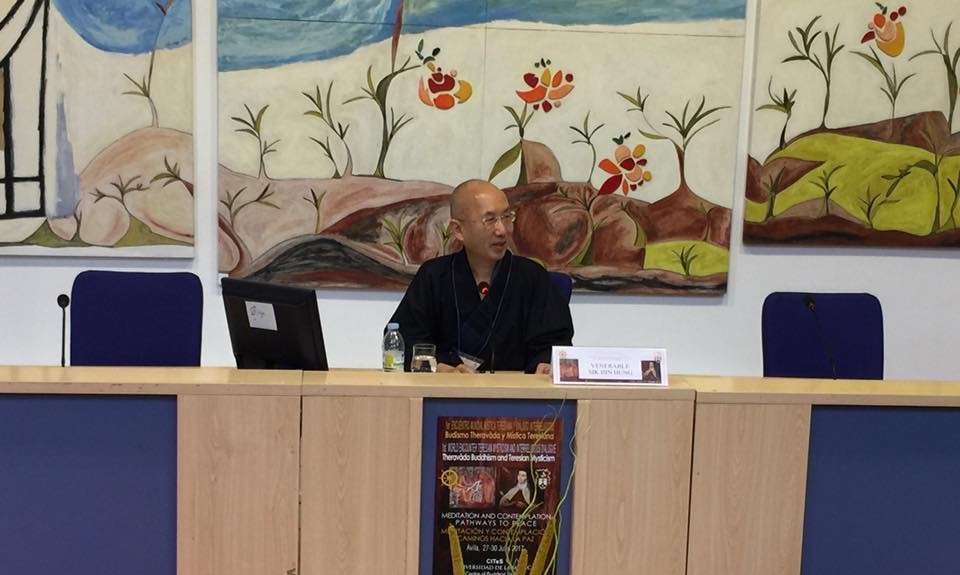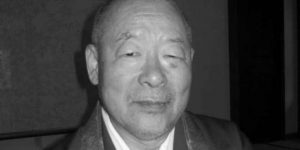
In July, Ven. Hin Hung, the director of the Centre of Buddhist Studies (CBS) at The University of Hong Kong (HKU), traveled to the scenic town of Avila in Spain to give a speech at the Carmelite and Theravada contemplative interfaith dialogue. Before he set off, Ven. Hin Hung told me that it was more like a learning process, seeing what other people are doing. “It’s good to know each other and see how we can learn from each other. You can’t simply ignore that other people exist, so you need to learn how to live with them, how to coexist with them—and preferably, understand how they think,” he observed.
Ven. Hin Hung also believes it is valid to see if other cultures or institutions might do certain things better, and if so, to explore ways of adopting them. He gave the example of Thich Nhat Hanh, who adapted many elements and forms of Western Christianity in organizing his Plum Village community. While Buddhists interested in interfaith dialogue have yet to really discern what can feasibly be adopted from the Carmelite tradition without compromising the integrity of Buddhism, the fact that both sides have made a start at attempting to see what is possible is immensely encouraging.
Speaking about his personal feelings, Ven. Hin Hung said: “I was so impressed by the churches and cathedrals. I feel they exude not just immense wealth committed by their commissioners, but also the artistic standards and architectural techniques that have made such beautiful religious buildings. Most of all, one can feel the sincerity and religious devotion inside the structures.”
During his trip, Ven. Hin Hung was struck by how traditional Spanish life has centered on the Latin Church for so many hundreds of years. It was an interesting contrast to how secular contemporary Spain has become, and he recalled the low percentage at which the Spanish people designate themselves practicing Catholics (19 per cent). “To be clear, society globally doesn’t value spirituality as much as it should. This is a problem across the world,” he said. It was important to be mindful and humble about the fact that despite the success of the conference, which brought together diverse people who otherwise might never have met in person, the number of ordained or avidly practicing Buddhists and Catholics has been decreasing, and that broadening any kind of spiritual message would take time, commitment, and modesty.
At the conference, Ven. Hin Hung was further struck by the exemplary life of Saint Teresa of Avila and her devotion to her faith, and the lifestyle of contemporary nuns, who were totally cloistered from the outside world. They would not see visitors to their church, nor would they attend the conference (only a couple of Carmelite nuns ventured from their monasteries to present a paper at the conference). He also admired how Saint Teresa developed her own systematic plan for reformed spiritual growth.
It is high praise from a Buddhist monk to call the experiences of a figure from a different religion “real”—real in the sense that they were sincere and not merely hallucinations to be dismissed. “True or false is not the question here, what I want to address is their sincerity in not just their own practice but their intention to communicate with us,” said Ven. Hin Hung. This was the crux of dialogue: to be free to disagree, but also to feel open to explore potential affinities: “I felt comfortable talking to our Carmelite hosts, and neither of us had any ulterior motives of conversion. I had a wonderful discussion with Cristiana Dobner, who really helped me to understand more about the methodology of devotion in Carmelite practice.”
Returning home to Hong Kong, Ven. Hin Hung was correct in his prediction that there are important things to learn from other religions. “I really like some of the terms that the Carmelites use, like ‘the art of prayer’ or ‘opening yourself to the calling of God.’ How can we relate this idea of ‘calling’ to Buddhism?” he pondered. “How can we infuse a sense of calling and personal feeling into the Buddhist concept of taking refuge in the Triple Gem?” Ven. Hin Hung conceded that Buddhism’s nature was “quieter,” a religion of insight beyond existence and non-existence, rather than Catholicism’s emphasis on God’s love, vengeance, and sense of justice, culminating in that most Catholic of motifs, the Passion of the Christ. Certainly the devotional schools within Buddhism could claim phenomenological similarities with Christianity, but these schools do not necessarily represent the whole of Buddhism.
For decades, Ven. Hin Hung has worked and taught within a deep-rooted network of Chinese Buddhism in Hong Kong. However, his instincts remain inclined toward an open-minded engagement with the world. I cannot help but believe that this motivates his curiosity about interfaith dialogue. “You can feel it when someone has spiritual wealth. You can feel it in the Carmelites. We need more of that for Buddhists,” he concluded to me. Like so many religious leaders, including his new Carmelite friends, he straddles both the hierarchical Confucian tradition that has influenced how Chinese Buddhists organize their priorities, but also a world of disappearing borders and interconnected societies. It is perhaps no surprise that such a complex era in human history demands less simple answers and more ideas with nuance—and, of course, solutions that bring about harmonious relations and goodwill between all people.
Related features from Buddhistdoor Global
When Catholics Reach Out: Perspectives of the Order of Discalced Carmelites on Dialogues with Buddhists
Theravada Buddhism and Teresian Mysticism: A Reflection on Interreligious Dialogue
Related blog posts from Buddhistdoor Global
Is Pure Land Buddhism a “Mystic” Tradition?
The Importance of Interreligious Dialogue and Goals for the Encounter: From the Buddhist Perspective












